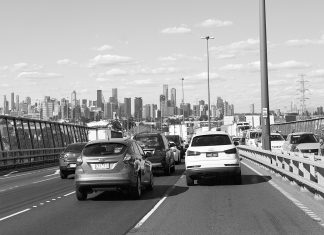AN updated national earthquake map has identified the Latrobe Valley as one of Australia’s highest risk areas for earthquake activity.
Geoscience Australia’s Earthquake Hazard Map, recently updated for the first time since 1991, recognised of the three hotspots for quake activity in Australia, including Tennant Creek in Northern Territory and an area in the south of Western Australia, the Valley was the most densely populated.
GA seismologist Dr Mark Leonard said the mapping information should serve as a warning to local residents to ensure their homes were appropriately insured.
Though the updated information was designed to be incorporated into the national building code, Dr Leonard said most houses built according to existing codes were “unlikely to fall down and kill you” but, if damaged by a quake, could “cost you a lot of money”.
The revised GA map comes five months after a quake measuring 5.5 on the Richter scale, the largest in Victoria for more than 100 years, shook the Valley. Its epicentre was in the Narracan area near Moe.
Dr Leonard said mapping activity assessed the density of quakes in zones, looked at “boundaries of high and low activity” and determined “what we can expect” to experience in these zones.
He said GA worked from the premise the rate at which earthquakes of various magnitudes happen at any location defined the probability of occurrence.
“Where we have seen more quakes over the last 50 to 100 years is where we can expect to see more quakes in the future,” Dr Leonard said.
“The Latrobe Valley is not the highest activity (area) in the country but it is one of the more active areas and the others are far less populated whereas the Latrobe Valley has a lot of people and infrastructure.”
Asked whether it was possible to predict when, or if, a large magnitude quake could hit the area, Dr Leonard said “sadly, it is impossible to predict”.
He said statistically “if you take in the Latrobe Valley, (up to) Bairnsdale in the east and across to Port Phillip Bay, you can expect to see a large quake hit somewhere in that area about every 5000 years – of a magnitude 6.5, the size of which hit Tennant Creek in 1988”.
Dr Leonard said “by Australian standards” these quakes were “big and would destroy most houses within a 10 kilometre by 25 kilometre area”.
Since earthquake records have been kept “going back to the settlement of Melbourne” Dr Leonard said there was no record of a major quake hitting this region.
“Geologists believe there have been many (of these quakes) over the last 10,000 years but they can’t find material they can date to say when the last one was – more likely it was in the order of thousands of years ago though,” he said.
Dr Leonard said “no-one really knows why” areas south of the Strzelecki Ranges, encompassing Gippsland, were prone to a higher level of quake activity but mapping had “identified several active faults in the Latrobe Valley”.










